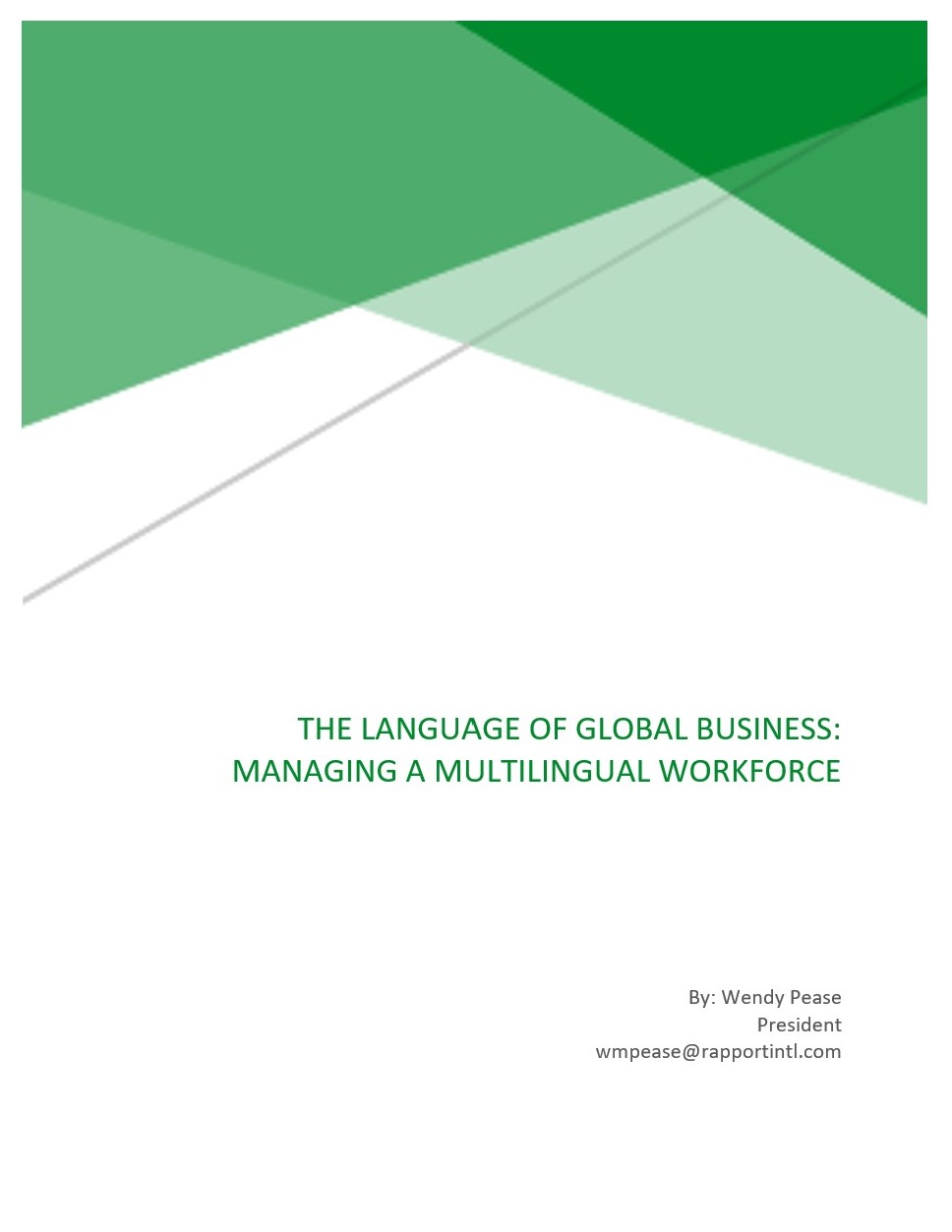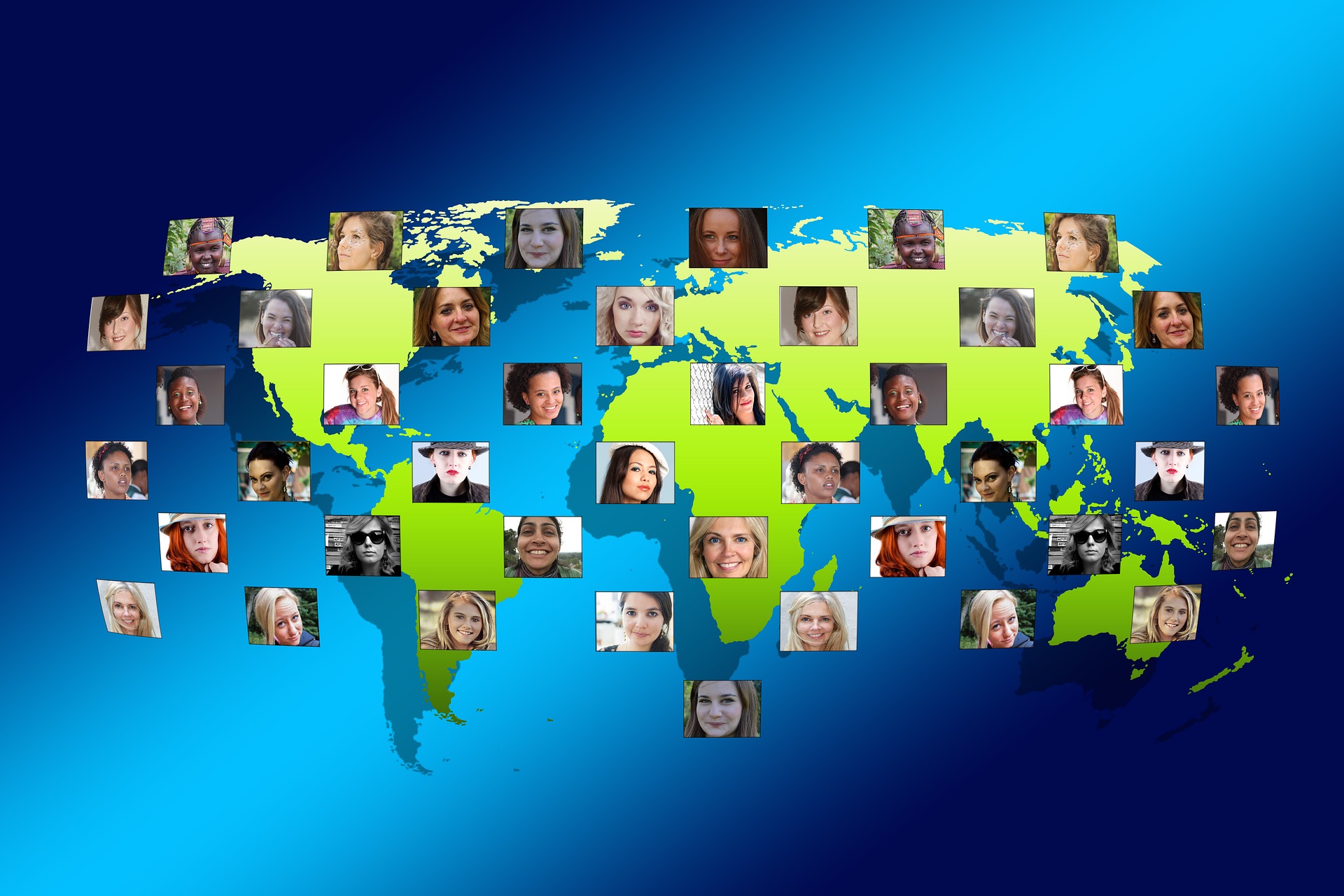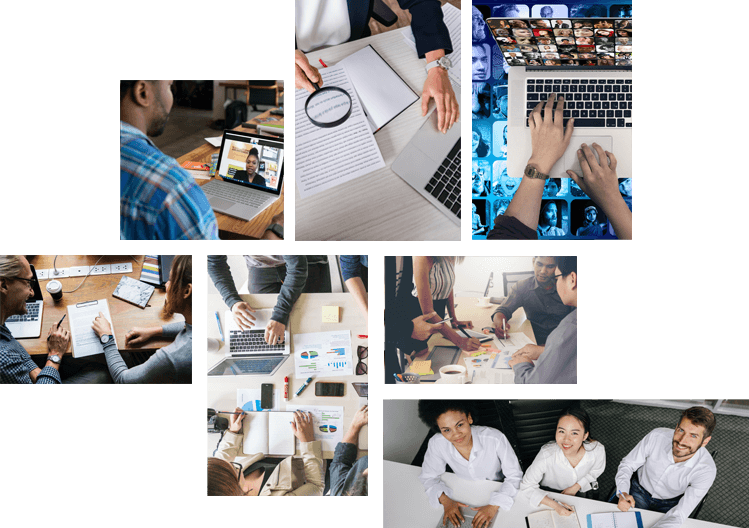Table of contents
Don't have to time to Read the Entire Guide Now?
Fill out the form for a downloadable PDF version of the guide you can reference later.
Global businesses outperform domestic competitors on every measure!
Global businesses enjoy higher revenues and growth by accessing international sales and profits. They have larger workforces with higher wages. They are more diverse which leads to more innovation because different cultures and points of view contribute insights to their strategy development and planning. And they enjoy less risk because they’re spread across multiple markets which means when one economy is in a down-swing, another may be on the rise, this balances economic impact. Any business has a huge opportunity to enjoy these perks by taking their business global.
As mentioned above, one of the perks of a successful international business is a larger, more diverse workforce. Growth will lead to the need to hire staff either in-country or bilingual staff here to scale operations into the new markets. As more languages and cultures are introduced into a workforce, issues can arise:

With the proper planning these types of situations can be avoided.
Watch the webinar Becoming an Employer of Choice to learn about attracting and retaining a diverse workforce.
Start with a Clear Communication Strategy
A multilingual strategy shared across all departments and aligned with the overall corporate strategy contributes to business success. From the Executive Team to Marketing to Operations, each department should share common policies and goals:
- A clear company mission and value statement that embraces international growth
- A commitment to diversity and inclusion for all departments and levels in the organization(Read about a manufacturing company who has realized amazing success by actively recruiting and embracing a diverse workforce in out blog Embracing Inclusion and Diversity – Boston Centerless Manufacturing.)
- A plan for strategically targeting markets and languages for growth (Read more about the importance of planning and strategy in our blog Expanding into Multilingual Markets Requires a Strategy.)
Communicating these policies and goals to the workforce in the right language and in a culturally sensitive and appropriate way will lead to a more cohesive, loyal, and invested staff.
Develop a Process for Communicating with Diverse Employees
What is the best way to communicate with multilingual employees in their preferred language while culturally adapting the message and keeping it consistent? Develop a process that follows the 3-Rs:
- Regular
- Relatable
- Responsible

Regular
Communications should follow a regular routine and process. Whether you are sending out messages meant to educate, announce, inspire, or reinforce, the process should be defined and followed for every message. By creating this structure you’ll ensure that communications are consistent for all staff in every language.
Relatable
Having employees in different countries and who speak different languages means your communications need to be translated and adapted to be relatable across different cultures and countries. Working with a high-quality language services provider (LSP) will help make sure your messages are appropriate and sensitive to cultural differences and norms.
Another tip for keeping your communications relatable for non-English speaking employees is to adapt your English messages, both written and spoken, to be clear for more accurate translations and interpretations.
- Don’t use idioms, colloquial sayings, slang, or humor in your messaging.
- When speaking through an interpreter go slowly and use deliberate wording.
- Seek confirmation that the message was understood and clear to the listener/reader.
- Follow-up with well-written translated documentation when necessary.
Responsible
Take responsibility for delivering translated or interpreted communications for your staff. Partner with a trusted LSP to provide the best experience, don’t rely on bilingual employees or over-seas distributors to adapt your communications, problems can arise, and mistakes can be costly.

Building a process and following it will simplify communications and will ensure that the information you are providing to your employees is consistent and accurate. Additionally, communicating with employees in their native language helps build a community, it builds loyalty and demonstrates the company’s commitment to respecting and embracing the diversity of its workforce.
Learn more about Using Interpreting Services on our blog.
Communication Technology and Tools
Technology for multilingual communications is evolving and changing the way many professional translation agencies do business. Knowing your agency’s gives insight into their process as well as the potential quality of the translations they provide. (Keep reading to learn more about quality).
Machine translation, translation memory programs, and virtual meeting apps like Zoom have an impact on communications. When you’re shopping for translation services and asking about tools and technology, keep GRID in mind:

AI-driven translation debuted in early 2023. Read about its early benefits and dangers, and the future of the technology within the industry, here: AI and Language Services: Will AI Translation Eliminate the Need for Human Translators?
Gritty
For “Gritty” translation, or to get the gist across, machine translation is a quick, easy, and free option. But when quality counts, do not use machine translation. Although it is improving, machines still can’t process the nuances of language which often results in stilted, awkward, or incorrect translations. Read more in our blog Google Translate – What’s the Worst that Can Happen.
Reusable
Yet glossaries and memory technologies can help you. When you use the same phrases, wording, or summaries in many types of communication, working with a translation company that utilizes a translation memory tool means your materials will maintain consistency and you could realize cost savings because they can reuse the translation on many different projects. Translation memory is a translation tool that remembers segments of your projects and compares them to future jobs to find possible matches and opportunities to reuse materials that have been previously translated. Ask your translation service provider if they use translation memory tools and how that can benefit your company.
Important
Once you receive a high-quality translation, keeping track of the finalized version and saving it for future use can save time and money down the road. Ask your translation company about their document management system and whether they will save the materials or if that is your responsibility.
Delivery
Finally, deciding whether you need synchronous or asynchronous communications can help you decide what types of language services you need.
- Synchronous communication – immediate back-and-forth communication between parties that happens in real time.
- Asynchronous communication – communication that is not immediate and can be delivered in a variety of ways – email, video, written communications, etc.
Typically, synchronous communication happens in-person, over the phone, or on a video call. In these situations, you access to a live interpreter to assist with your multilingual communications. Asynchronous communications are written or pre-recorded. High quality translation services in the correct format or modality ease access to this type of communication.. Knowing the difference will help you decide what services you need.
High-Quality Communications to Avoid Misunderstandings
Quality is the last big consideration when creating a multilingual communications plan. Timely, accurate communication with employees is important. When you take the time to develop a strategy and process, and you’re familiar with the tools of the trade, consider how to get the quality you need in different scenarios.
First, don’t assume that all your employees do (or should) speak or read English. Even if they do, providing information in their native language leads to deeper understanding and buy-in. The method you choose for translating and interpreting information has a big impact on the quality of the deliverables.
For example, using a bilingual employee might seem like a quick and “free” way to bridge communications. But have you considered the hidden cost or the privacy implications when the communications are sensitive? Depending on the nature of the communications this can be a much more expensive option than working with a professional translation agency. Plus, because the employee is likely working outside of their expertise, you may be sacrificing quality and you run the risk of delivering the wrong message. Read more about this in our blog What’s the REAL Cost of Your Employee doing Your Translation.
What about asking your in-country distributor to provide translation assistance? While this may seem like a good option because the distributor will know the language and the culture, you run the risk of your message being changed or adapted in a way that isn’t right. Plus, you still have the issue of privacy if the information isn’t meant to be seen outside the company.
Choosing a professional language service provider helps mitigate the issues of accuracy and privacy. They often provide a satisfaction guarantee, and they are bound by confidentiality. Plus, they employ professional translators who know the language, culture, and have experience in your industry so they know the terms and subject matter and can relay your message accurately. Good agencies and interpreters will also make sure that your content and communications are culturally relevant.
Remember, not all content or agencies are created equal! First, let’s consider content.
Determining what to translate and how much to invest in the translation starts with a framework of importance and cost. Categorize the materials into high or low importance and high or low cost to determine the best ROI for your translation spend. . Here’s an example of what this framework might look like:

Once mapped out, work with a good language services company - explain your needs, show them your framework, and work together to plan and develop a timeline and budget.
Finding a Quality Translation Agency
Remember how I mentioned not all language service providers are equal? Part of getting good quality services is knowing how your agency works. There are several different methods used by agencies today, and not all deliver the same level of results. Here are some of the methods employed:
Machine Translation
It’s doubtful you’ll find an agency that only delivers machine translated materials. This is typically something people use on their own and as mentioned previously it’s not a great option when quality counts. Businesses should use caution when employing these tools for regular communications because as far as it has come, it still often makes grammatical and word-choice errors that can lead to serious miscommunications. There have been legal cases and medical deaths due to bad communication through machine translation. The rule of thumb when you need accurate communications is - IF IT’S IMPORTANT, DO NOT USE GOOGLE TRANSLATE.
Machine Translation with Post Editing
This is a method utilized by some agencies and independent translators. In this process, the translator runs the material through a machine translator, like Google Translate, then reviews the translation and cleans-up the grammar and incorrect words. While this method would seem to work in theory, it often results in a translation that doesn’t seem natural or smooth. While you’ll get the point across and it’s a step above machine translation alone, it’s not a good option when quality is important.
Human Translation Through Crowd Sourcing
This is a method being employed by some LSPs. They receive your materials and then shop them out over the internet to anyone who has the time to provide the translation. While you will likely receive a translation done by a native speaker, you have no control over who has completed the translation, whether they have expertise in your industry, it’s unlikely you’ll have access to them to use them again for consistency of voice for new materials, and your materials are out on the internet which compromises confidentiality and ownership rights.
Human Professional Translation
Human professional translation – The best, highest-quality translations will be completed by a professional translator who is a native speaker, is familiar with the culture, and has experience in your industry. Working with an agency that focuses on high quality, you get matched with a translator who is qualified to do your work. The very best agencies match you to a translator and then keep you working with them so they can develop a deeper understanding of your needs and preferences. Developing this relationship also gives you consistency of voice throughout all your materials.
Shop around and ask the right questions to find the agency that is the best fit for your needs.

Repeating the Process
Now that you have a strategy, process, know the technology and quality you need, it’s time to implement and repeat. Start with your most needed language, see what works and refine anything that isn’t working. Then duplicate the process for the next language, and so on.
Having a repeatable process that you continually review and improve will keep the communication gears spinning smoothly and will help you attract and build a strong, knowledgeable, loyal workforce.

Next Steps
So how do you get started on your own journey toward global communications? Follow these steps:
- Commit to organizational vision, strategy & inclusiveness
- Develop a communications strategy
- Define key languages
- Identify a regular, relatable, and responsible process
- Map your content to attract, retain and engage
- Clarify appropriate technology for GRID
- Provide quality when needed
- Build a relationship with an appropriate language agency for guidance and support
- Document your process and replicate it for additional languages
- Reach out for advice!
Here at Rapport International we offer a whole host of multilingual communication and cultural services.

We also have resources available that can answer your questions and provide more information about global communications.
- The Language of Global Marketing book
- The Global Marketing Show podcast
- The Rapport International Resource Library for learning more
Rapport International specializes in multilingual communications, providing language translation and interpretation services that are accurate and culturally appropriate. We use the right voice and the correct terminology to avoid liability, customize services to your needs, and deliver on time and within your budget. With our 100% satisfaction guarantee, you can trust that it’s done right. Contact us today if you would like more information or to get a free quote.







